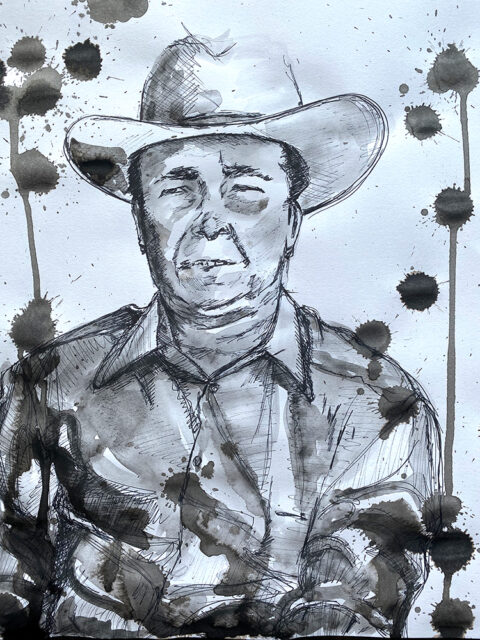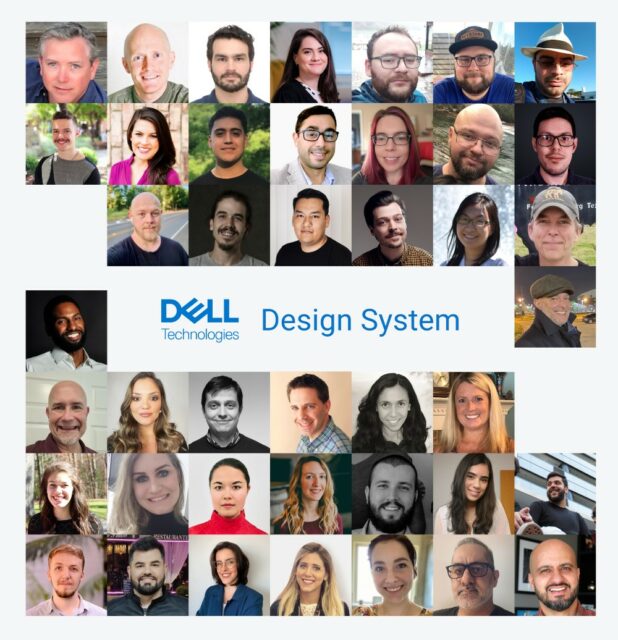By Sara Alvarez Kleinsmith, thought leadership, Dell Technologies
As a young student growing up in Miami, Michael Diaz had a passion for drawing and painting from an early age. When a teacher noticed his artwork and encouraged him to try out for an advanced placement college art program, he put together his first portfolio and was accepted. Throughout his years of study, he realized that he could marry his love of visual art with technology and help people in the process. As principal product designer at Dell Technologies, he’s put his skills to use throughout his career to make the user experience more accessible, inspiring and enjoyable.
His dedication to inclusive design and his ability to innovate throughout his career make him a Breakthrough Champion. According to Dell’s Breakthrough study, only 37% of workers throughout a variety of industries globally feel a sense of purpose in their work. The combination of art and technology has allowed people like Michael to do what they love while being a part of an innovative team driving human progress. He chatted with Perspectives about his career, advice for aspiring artists and technologists, and why inclusive design matters.
How did coming from a multicultural background inform your work as an artist and designer?

My parents (being from Guatemala and the Dominican Republic) always made sure to expose me to cultures and people from varying backgrounds. I understood from an early age that language, music, culture and abilities ranged from person to person and that everyone has different needs. I’ve always had an appreciation for both of my parents’ cultures. As a native of the melting pot of South Florida, and growing up around Latino culture, I’ve always appreciated color, shape, form and imagery from these cultures. So, I think that my background is baked into what I create and how I see the world. It’s definitely had a major influence in how I have developed personally, all the way to how I approach product design.
How did you make the transition from young visual artist to product designer?
I realized that art can be a very exciting career path in high school. At the school I attended, there was a special advanced placement art & tech program for students, where I learned graphic design and how to create digital art. So, I was already doing art and tech classes in high school. Learning all the different aspects of visual art- like color theory and art history, really helped me understand how to apply these skills to a career. From there, I went to the University of Central Florida; then after graduation, I went to work at a marketing agency as a junior designer. I got a huge breadth of experience across all types of design, from print design to digital design and trade show event design. I even designed graphics that were put on race cars. I then transitioned into doing more product design, which is designing for user experience of digital products for all device types. With the rising popularity of touchscreen devices in the early 2000s came a huge demand for user experience design, and my career really took off from there.
Can you talk about inclusive design and how it positively impacts users and their experience?
No matter who the user is, they deserve to have an enjoyable and easy experience. I’ve had the amazing opportunity to work for organizations like Susan G. Komen and the American College of Physicians, where I was able to do a deep-dive in learning about user empathy and accessibility to better design experiences. Being empathetic and imagining the life and limitations of someone else can help a designer create a better user experience.
Inclusive design is also about ethical design. We want to promote a healthy way of using a product, rather than seeking engagement on a site regardless of the negative impact it could have on users. This is something I try to encourage my peers and mentees to do as well. That’s where compassion and empathy come into design. You want the user to be able to access an experience through many points, whether it’s through touch, keyboard navigation or using screen readers along with inclusive language and content. We consider the needs of each individual at the development stage of design. This is what makes all the difference.
Can you describe how you’re making a difference in design with your team at Dell?
 I came to Dell as a principal product designer for the Dell Design Systems team, and that team is part of a larger initiative with Dell Digital Design in unifying the experiences across the entire organization. The goal with the team is to create a unified look and feel across products. Our work takes into account usability, accessibility and inclusivity. That’s one of the largest initiatives that we have as a team, and we partner with many teams, including Dell’s accessibility team, to accomplish that. Part of my background is creating libraries and creating a system for the design so that it can scale, and now I’m actively putting that into practice on a dedicated team.
I came to Dell as a principal product designer for the Dell Design Systems team, and that team is part of a larger initiative with Dell Digital Design in unifying the experiences across the entire organization. The goal with the team is to create a unified look and feel across products. Our work takes into account usability, accessibility and inclusivity. That’s one of the largest initiatives that we have as a team, and we partner with many teams, including Dell’s accessibility team, to accomplish that. Part of my background is creating libraries and creating a system for the design so that it can scale, and now I’m actively putting that into practice on a dedicated team.
What do you think the future of user design is?
The future is getting into multiple ways of interacting with an experience. Not just through screen or touch, but through sound, through virtual and augmented reality. All of these experiences will be used to create a larger, mega experience. We’re going to start seeing more of that in our everyday lives.
What advice would you give to aspiring artists and designers?
Always look for ways to stay motivated. Always stay aware of the latest technology, because it evolves quickly. Finally, always be empathetic of those you’re designing for. It’s important to understand how people navigate and interact with an application. That takes empathy. By implementing user research and testing, our team is able to methodically make empathetic design decisions in our work. I’m proud knowing that we’re able to make people’s lives a little easier and more accessible every day.
Breakthrough Champions is a series on Perspectives profiling ordinary Dell employees doing amazing things to advance digital transformation. The series is inspired by Dell’s “Breakthrough” platform and the belief that progress happens at the intersection of people and technology.
